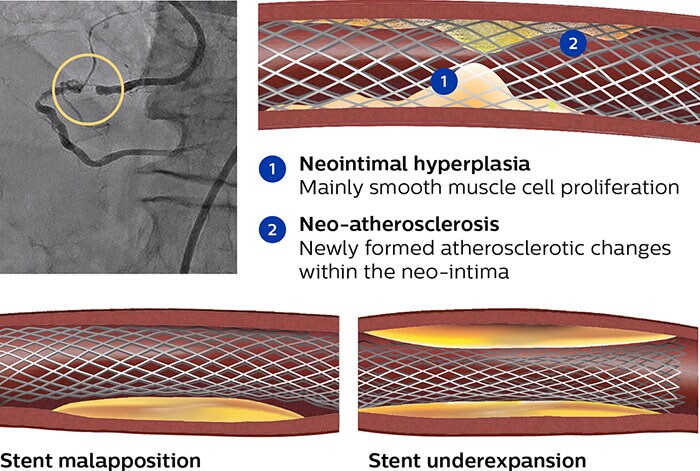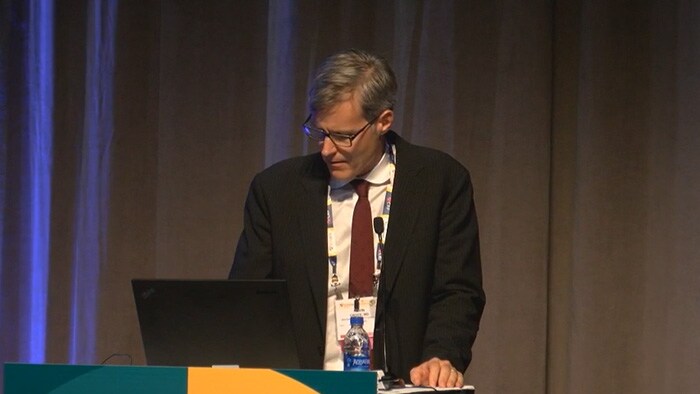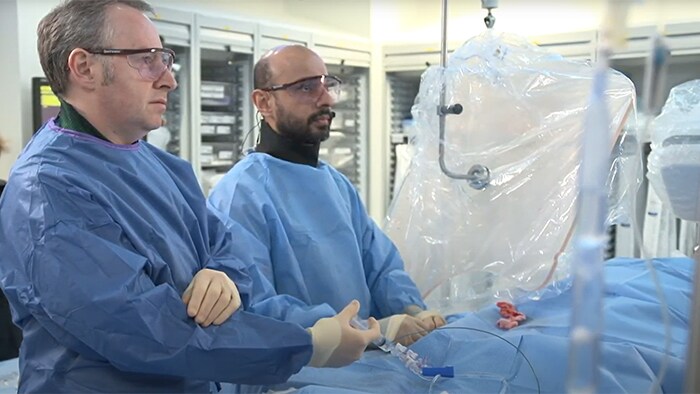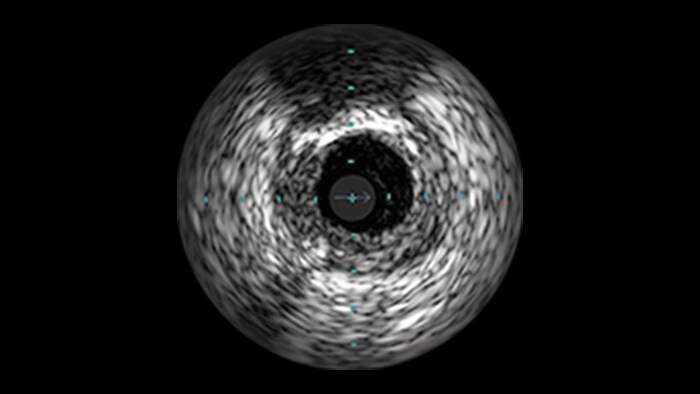pro 16, 2021 by Philips
Reading time: 4-5 minutes
In-stent restenosis

Real-world incidence rates of in-stent restenosis (ISR) account for 12% of PCI.1 Each patient requires a customized treatment strategy based on the extent and mechanism of their restenosis, requiring flexibility in your toolkit and approach.3,4
Rates of restenosis at follow up2

Clinical challenges
– 2nd stent 12-16% at 12 months and 33% at 3-5 years5 – 3rd stent 25% at 6 months6 – Difficult to identify under-expansion or mal-apposition – Challenging to determine if it is geographical miss or under-sizing – Inability to discern between neointimal hyperplasia or neo-atherosclerosis – Mechanical tools, from angioplasty to rotational or orbital atherectomy, are largely ineffective in restenotic lesions.8 – The unique soft, aqueous morphology of neointimal hyperplasia tissue presents a challenge to mechanical intervention.9
Risk of restenosis
Growing with each layer of stent5


Case Reports:
Royal Bournemouth and Christchurch Hospitals NHS Foundation Trust
Lesion Preparation – Do you have the latest tools available? from Dr. Peter O’Kane featured at BCIS- ACI- 2023.
LAD In-Stent Restenosis: iFR and IVUS Co-registration, laser atherectomy, final DCB and stenting
CX in-stent restenosis: IVUS Co-registration, scoring balloon lesion-prep, IVUS-guided DCB treatment, SB branch rescue and final KBT
Interview:
Interview – The importance of iFR and IVUS in the treatment of ISR
Webinar:
Navigating Through Mechanistic Features and Treatment Strategies During PCI for Stent Failure
2018 ESC/EACTS Guidelines on myocardial revascularization10
| Restenosis | Class | Level |
| IVUS and/or OCT should be considered to detect stent-related mechanical problem leading to restenosis. | IIa | C |
Comparative luminal gain11

2018 ESC/EACTS Guidelines on myocardial revascularization12
| Restenosis | | |
| DES are recommended for the treatment of in-stent restenosis of BMS or DES.9,10,11,12 | I | A |
| Drug-coated ballons are recommended for the treatment of in-stent restenosis of BMS or DES.9,10,11,12 | I | A |
Philips IVUS and SyncVision advanced imaging solution: ELCA laser atherectomy catheter: AngioSculpt PTCA scoring balloon catheter:
Educational resources
Tutorial Viedos:
How to do iFR Co-registration
How to use Laser

Congresses:
How to deal with ISR and multi-layer ISR
Kevin J. Croce, MD, PhD, Brigham & Women's Hospital Harvard Medical School, Boston, MA
Share this article
Sign up to receive news and updates from Philips
Explore more
References
1.Cassese S, Byrne RA, Tada T, et al. Incidence and predictors of restenosis after coronary stenting in 10,004 patients with surveillance angiography. Heart 2014; 100:153–9. 2.Dangas et a. In-Stent Restenosis in the Drug-Eluting Stent Era. J Am Coll Cardiol 2010; 56:1897–907. 3.Bhatt D. Treatment of In-Stent Restenosis, Excerpt from Cardiovascular Intervention: A Companion to Braunwald’s Heart Disease. Philadelphia: Elsevier 2016:209-222. 4.Ota H. Novel Approaches for Cardiovascular Drug-Eluting Devices Cardiovasc Revasc Med. 2015; 16:84-89; Maluenda G. Intracoronary brachytherapy for Recurrent Drug-Eluting Stent Failure CardiovascInterv. 2012;5:12-19; Kubo S. Differential relative efficacy between drug-eluting stents in patients with bare metal and drug-eluting stent restenosis Euro Intervention. 2013;9:788-796; Latib A. Long-term outcomes after the percutaneous treatment of drug-eluting stent restenosisJACC Cardiovasc Interv. 2011;4:155-164. 5.Pratsos, A. (2009). Atherectomy and the role of excimer laser in treating CAD. Cardiac Interventions Today, January/February, 27-34. 6.Sousa-Uva M, Neumann FJ, Ahlsson A, Alfonso F, Banning AP, 7.Costa JR, Mintz GS, Carlier SG, et al. Nonrandomized comparison of coronary stenting under intravascular ultrasound guidance of direct stenting without predilation versus conventional predilation with a semi-compliant balloon versus predilation with a new scoring balloon. Am J 8.Alfonso F, Perez-Vizcayno MJ, Cardenas A, Garcia Del Blanco B, Seidelberger B, Iniguez A, Gomez-Recio M, Masotti M, Velazquez MT, Sanchis J, Garcia-Touchard A, Zueco J, Bethencourt A, Melgares R, Cequier A, Dominguez A, Mainar V, Lopez-Minguez JR, Moreu J, Marti V, Moreno R, Jimenez-Quevedo P, Gonzalo N, Fernandez C, Macaya C; RIBS V Study Investigators, under the auspices of the Working Group on Interventional Cardiology of the Spanish Society of Cardiology. A randomized comparison of drug-eluting balloon versus everolimus-eluting stent in patients with bare-metal stent-in-stent restenosis: The RIBS V Clinical Trial (Restenosis Intra-stent of Bare Metal Stents: Paclitaxel-eluting balloon vs. everolimus-eluting stent). J Am Coll Cardiol 2014;63:1378–1386. 9.Alfonso F, Perez-Vizcayno MJ, Cardenas A, Garcia del Blanco B, Garcia-Touchard A, Lopez-Minguez JR, Benedicto A, Masotti M, Zueco J, Iniguez A, Velazquez M, Moreno R, Mainar V, Dominguez A, Pomar F, Melgares R, Rivero F, Jimenez-Quevedo P, Gonzalo N, Fernandez C, Macaya C, RIBS IV Investigators. A prospective randomized trial of drug-eluting balloons versus everolimus-eluting stents in patients with in-stent restenosis of drug-eluting stents: The RIBS IV randomized clinical trial. J Am Coll Cardiol 2015; 66:23–33. 10.Siontis GC, Stefanini GG, Mavridis D, Siontis KC, Alfonso F, Perez-Vizcayno MJ, Byrne RA, Kastrati A, Meier B, Salanti G, Juni P, Windecker S. Percutaneous coronary interventional strategies for treatment of in-stent restenosis: A network meta-analysis. Lancet 2015;386:655–664. 11.Giacoppo D, Gargiulo G, Aruta P, Capranzano P, Tamburino C, Capodanno D. Treatment strategies for coronary in-stent restenosis: Systematic review and hierarchical Bayesian network meta-analysis of 24 randomised trials and 4880 patients. BMJ 2015; 351:h5392.
Benedetto U, Byrne RA, Collet JP, Falk V, Head SJ, Jüni P, Kastrati A, Koller A, Kristensen SD, Niebauer J, Richter DJ, Seferovic PM, Sibbing D, Stefanini GG, Windecker S, Yadav R, Zembala MO; ESC Scientific Document
Group,'2018 ESC/EACTS Guidelines on myocardial revascularization., Eur J Cardiothorac Surg. 2018 Aug 27. doi: 10.1093/ejcts/ezy289
Cardiol. 2007;100:812-817.













